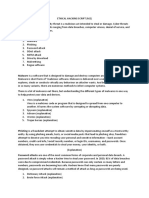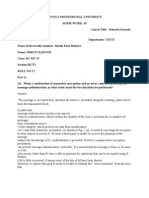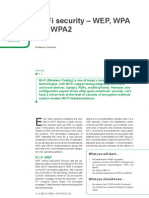0% found this document useful (0 votes)
346 views61 pagesDarkweb Python Hidden Services
This document discusses using Python to discover, analyze, and extract information from hidden services on the dark web. It provides an overview of the Tor network and how it anonymizes internet traffic. It also describes tools like Stem and TorRequest that allow controlling Tor circuits and making anonymous requests in Python. The document outlines approaches for crawling hidden services, applying patterns to detect specific content, and using search engines like Ahmia to discover active onion addresses.
Uploaded by
Lopez PichiliCopyright
© © All Rights Reserved
We take content rights seriously. If you suspect this is your content, claim it here.
Available Formats
Download as PDF, TXT or read online on Scribd
0% found this document useful (0 votes)
346 views61 pagesDarkweb Python Hidden Services
This document discusses using Python to discover, analyze, and extract information from hidden services on the dark web. It provides an overview of the Tor network and how it anonymizes internet traffic. It also describes tools like Stem and TorRequest that allow controlling Tor circuits and making anonymous requests in Python. The document outlines approaches for crawling hidden services, applying patterns to detect specific content, and using search engines like Ahmia to discover active onion addresses.
Uploaded by
Lopez PichiliCopyright
© © All Rights Reserved
We take content rights seriously. If you suspect this is your content, claim it here.
Available Formats
Download as PDF, TXT or read online on Scribd
/ 61

























































































